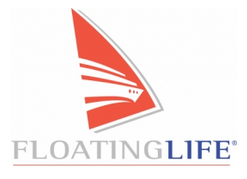Two days of discussions with super-yacht captains about the 2006 Maritime Labour Convention, Port State Controls and fiscal updates for Mediterranean charters.
[dropcap]O[/dropcap]n February 26th and 27th Floating Life Group organized the 2015 Floating Life Captains Meeting. The summit was attended by more than twenty captains of super and mega-yachts, from both the managed fleet and not. Speakers included Commander Giorgio De Sciora (RINA head of ISM/ISPS/MLC Operational Aspects of Passenger Ships) and Fiorenzo Spadoni (RINA Manager Pleasure Vessel Sector).
This group of professionals focused primarily on details concerning the 2006 Maritime Labour Convention and its effects on the yachting sector. Floating Life administrative department then presented a detailed examination of current VAT regulations applied to nations interested in charters in the Mediterranean.
What the 2006 M.L.C. is and what its effects are on the yachting sector
The Convention creates a single, coherent instrument that embodies the standards of existing maritime labour agreements. This series of regulations is applied to all seafarers and influences many administrative activities. The Convention is therefore applicable to the yachting sector (both commercial and private if the vessel is in possession of a Load Line Certificate), even though the principles that regulate the private sector are completely different from the shipping and passenger transport sectors.
Floating Life CEO Andrea Pezzini states: “The primary reason for this meeting is to analyse and bring the 2006 M.L.C. to the forefront of our attention, and then to familiarize the captains with the Floating Life system, which already conforms to the M.L.C. regulations. Ratification and implementation of the M.L.C. is a revolution for our sector and influences the customs of on board life: on and off duty hours, salaries, logistics and on board safety, specific behaviours and inspections. It also influences the development of new designs.”
The reactions of the parties involved
The vessel’s CREW– from hereon as crew we refer to all onboard personnel, without regard to rank or position – is the clear beneficiary of the Convention. It will be no longer possible to underpay crewmembers or keep their payment off the books (black money). The Convention, by referring to the maritime worker in general, eliminates any differentiations in rank and position creating common rules for all. The two days of discussions brought out that most captains were not aware of the effects of the Convention, above all its medium and long-term effects.
OWNERS are the most effected, both economically and in regards to responsibility. Financial impact is considerable, given that the application of the new rules is obligatory for new builds and imposes substantial changes in the design of onboard crew areas. Specific crew duties, betterment of onboard living conditions and above all a substantial increase in the quantity of onboard personnel: these are all subject to obligatory certification (when over 500 gross tons), or subject to inspection (under 500 gross tons), and in any case always subject to Port State Controls – inspections specifically aimed at the application of the International Labour Organization’s Convention.
YACHT MANAGEMENT COMPANIES, representing owners and managing crew in the yachting world, will deal with the Convention from ashore. There is a net increase in bureaucratic and administrative tasks, imposing an attentive management in regards to the application and fulfilment of the Convention’s rules. The companies will have an ever more important role in presenting, updating and interpreting the necessary documents for crew and owners. The latter in yachting are not invested with a working role, contrary to the shipping sector.
FLAG STATE AUTHORITIES: regarding shipping, rigorous controls of the application of the Convention were promptly undertaken by the States that ratified the Convention, while in the yachting sector (especially the under 500 gross ton segment) the Convention has not yet had a notable impact.
An “unknown rule”
In August 2013, when the Convention went into effect for its ratifying States, the M.L.C. was an “unknown rule”, with little publicity regarding its effects on the yachting world. For yachts already operative the impact is relative, but from 2013-2014 on, for new builds that will be delivered in the next few years, the effect of the M.L.C. will most certainly be felt, especially regarding construction costs and their impact on owners.
The expected increased size of yachts
One certain effect will be the increased size of yachts. While a yacht will maintain the design parameters for her use, she must now allocate more space for a more numerous crew. During the summit discussions revealed that commercially registered yachts up to 50 meters in length, if the Convention were to be literally applied (to those yachts, commercial or private, with a Load Line Certificate), would disappear. In reality, to carry eleven crew members and conform to the new rules regarding maximum daily and weekly on- and off-duty hours, a yacht must have a length overall superior to 50 meters and displace over 500 gross tons. Yachts running with reduced crew are no longer permitted.
2015 Hot topics
Several strategic themes were brought up by captains, surveyors and the Floating Life team, and were subject to in depth consideration.
The primary obstacle is surely ‘Regulation 2.3 – Hours of work and hours of rest’. The new regulation states that maximum hours of work shall not exceed 14 hours in any 24-hour period and 72 hours in any seven-day period, and that the minimum hours of rest shall not be less than ten hours in any 24-hour period and 77 hours in any seven-day period. In addition, hours of rest may be divided into no more than two periods, one of which shall be at least six hours in length. If we attempt to verify these conditions, applying them to a commercial yacht, designed and built to carry a maximum of seven crew members (a normal 36 meter motor yacht), everything changes.
If we try to imagine that, embarking guests in port, the yacht then leaves for a cruise of ten days at sea, without returning to port (that the succeeding nights will be spent underway or at anchor), we will find that it is impossible to apply the Regulation. Is it possible to think that, based on the Regulation, to give the crew the requested rest, the yacht must return to port, stop all operations and suspend client services, during the summer? Try to imagine all those commercial (or private with Load Line Certificates) yachts between 25 and 40 meters that have four or five crew berths and that during the summer cruise with clients or owners aboard for 25 consecutive days. How can they respect the Regulation?
Also discussed were the themes regarding safety regulations, the management of the safety committee, and updating required onboard equipment such as charts and pilot books. These themes are also considered in cross checking work and rest hours during the Port State Controls, and therefore are of crucial importance as it is obligatory to include them in the onboard work routine.
Another theme regards the handling of onboard leisure activities, therefore of the guest’s vacations. How are sea-toys (jet skis, diving) to be managed and handled; how can the guest’s need to relax be integrated with the need for licensing a sea-toy driver, already included and paid for in the charter package?
A few comments from some of the captains at the summit
Mark Russell, Captain of an almost completed San Lorenzo:
“I found the themes relating to work hours and repatriating crew members for health reasons or behavioral issues the most interesting and thought provoking.”
Luigi Soro, Captain of M/Y Blue Ice (Baglietto 41m):
“I agree with Mark; I also have a lot of doubts about how regulations created for commercial shipping can be applied to yachting. I also see management as a necessity for a rapid solution.”
Ettore Naddeo, Captain of M/Y Wallykokonut (member of the Floating Life fleet):
“We mustn’t run up against the wall, I agree with the initiative that would establish negotiations between all the categories concerned so that we can develop a constructive dialogue, confronting and increasing everyone’s input, as suggested by Pezzini during the meeting.”
The proposal: creation of an international technical committee including all the concerned parties
 The audience of captains and professionals attending the summit agree with Andrea Pezzini’s proposal to organize, as soon as possible, an international technical board, where the representatives of the maritime workers, the owners and the national authorities can open a discussion with the International Labor Organization for a “Yachting Addendum” to the 2006 M.L.C. The yachting sector is subject to regulations created for commercial and passenger shipping activities, sectors that are completely different in practice and size, but a considerable number of jobs are still involved. The sector presently includes 9,000 units over 24 meters, with the M.L.C. impact regarding apx. 60% to 70% of them. The sector has about 730 yachts over 24 meters on order in 2014 with 23 models over 100 meters. Presently the sector has an average length overall of 43.7 meters with an average displacement of 512.4 gross tons (56% of work in progress regards 45 to 50 meter yachts with over 499 gross tons). A sector that employs thousands.
The audience of captains and professionals attending the summit agree with Andrea Pezzini’s proposal to organize, as soon as possible, an international technical board, where the representatives of the maritime workers, the owners and the national authorities can open a discussion with the International Labor Organization for a “Yachting Addendum” to the 2006 M.L.C. The yachting sector is subject to regulations created for commercial and passenger shipping activities, sectors that are completely different in practice and size, but a considerable number of jobs are still involved. The sector presently includes 9,000 units over 24 meters, with the M.L.C. impact regarding apx. 60% to 70% of them. The sector has about 730 yachts over 24 meters on order in 2014 with 23 models over 100 meters. Presently the sector has an average length overall of 43.7 meters with an average displacement of 512.4 gross tons (56% of work in progress regards 45 to 50 meter yachts with over 499 gross tons). A sector that employs thousands.
Fiscal updates for chartering in the Mediterranean
 Barbara Tambani, President of Floating Life and head of the Floating Life administrative department, held an exhaustive presentation of the current regulations concerning VAT for charter activity in the Mediterranean. The presentation (please download the dedicated folder at the press area) analyses the details of applied VAT for charter activity in Italy, France, Croatia, Montenegro and Greece, including the management of correlated reports. Systems for administrative and tax management on bunkering VAT relative to the countries where the bunkering is carried out are also considered. Different management case reports regarding “cash floats” are also analysed: specifically, how to manage cash flows based on various country’s regulations, credit cards, and how to register, archive and present the reports to the owner.
Barbara Tambani, President of Floating Life and head of the Floating Life administrative department, held an exhaustive presentation of the current regulations concerning VAT for charter activity in the Mediterranean. The presentation (please download the dedicated folder at the press area) analyses the details of applied VAT for charter activity in Italy, France, Croatia, Montenegro and Greece, including the management of correlated reports. Systems for administrative and tax management on bunkering VAT relative to the countries where the bunkering is carried out are also considered. Different management case reports regarding “cash floats” are also analysed: specifically, how to manage cash flows based on various country’s regulations, credit cards, and how to register, archive and present the reports to the owner.
[divider style=”dashed” top=”20″ bottom=”20″]







